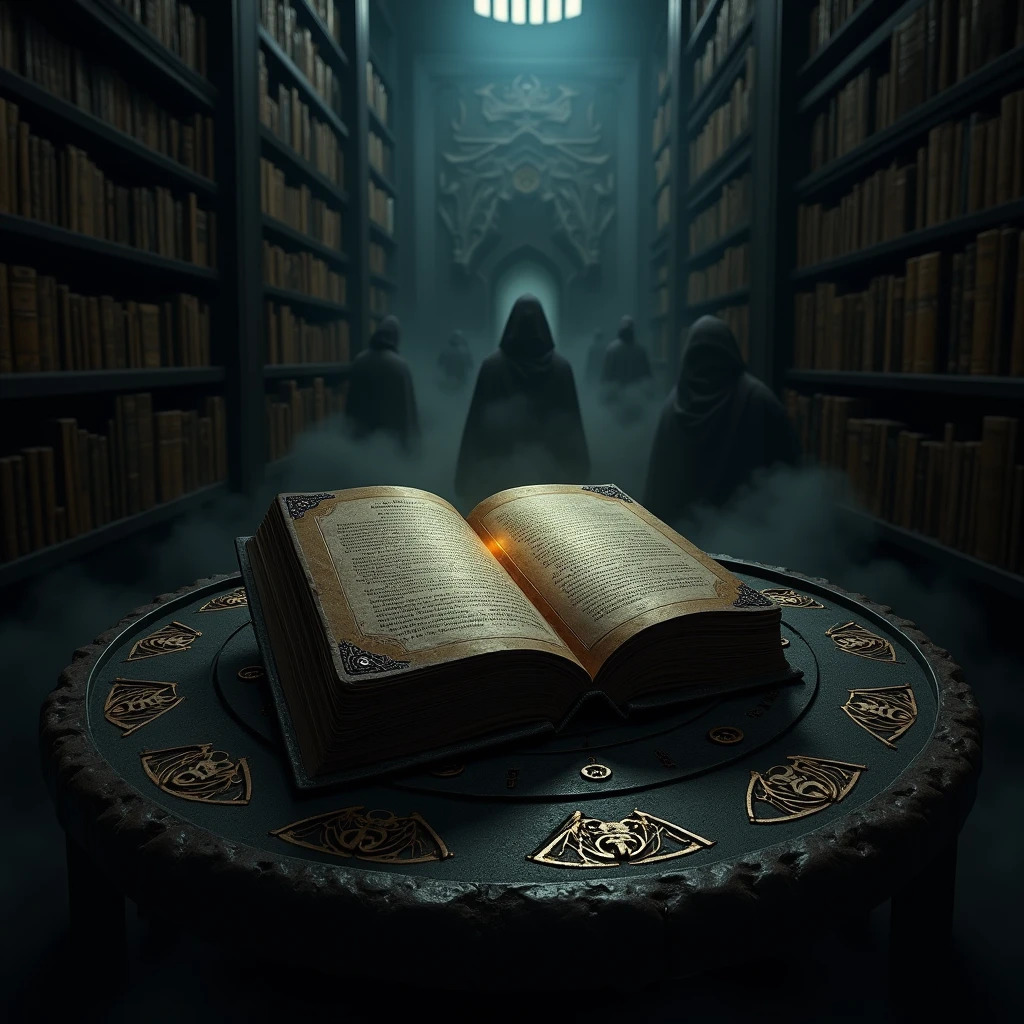The Necronomicon is perhaps the most famous occult book in literature and pop culture, a text shrouded in mystery that continues to intrigue scholars, occult enthusiasts, and horror fiction fans. But what lies behind this enigmatic volume? Is it an authentic work or merely a literary invention? Let’s explore its origins, legacy, and the influence it has had on culture and cinema.
The Origins of the Necronomicon
The Necronomicon was created by American writer H.P. Lovecraft in the early 20th century as part of his literary universe. Presented as an ancient and forbidden grimoire, the book appears in several of his works, including The Call of Cthulhu and The Dunwich Horror. According to Lovecraft's mythology, the Necronomicon was written in the 8th century by the mad Arab Abdul Alhazred and contained forbidden knowledge about the Great Old Ones and cosmic horrors.
Lovecraft himself explicitly stated that the Necronomicon was a fictional creation, but its allure led many to search for real copies and even produce apocryphal versions.

The Myth and Persistence of the Necronomicon
Despite being conceived as a literary device, the Necronomicon has taken on a life of its own in the occult world. Over the years, various authors have written and published supposed versions of the book, with texts ranging from esoteric occultism to Lovecraftian mythology. Some occultists have even claimed that the Necronomicon truly exists, citing obscure sources and lost manuscripts.
The fascination with the Necronomicon lies in its supposed ability to reveal forbidden truths, summon supernatural entities, and grant mystical powers to those who read it. This aura of mystery has contributed to its longevity and its reputation as a cursed book.
What Are Grimoires?
A grimoire is an ancient book of magic that contains spells, rituals, magical formulas, and instructions for summoning spirits or demons. Throughout history, grimoires have played a crucial role in esoteric practices, often associated with ceremonial magic and alchemy. These texts were considered tools of forbidden knowledge, and possessing them could lead to accusations of witchcraft.
Some of the most famous grimoires in history include:
Picatrix – A 10th-century Arabic text on astrological magic, which deeply influenced medieval occultism.
The Book of Abramelin – A 14th-15th century treatise that describes a system of angelic magic, influencing modern occultists like Aleister Crowley.
The Key of Solomon (Clavicula Salomonis) – A medieval grimoire attributed to King Solomon, containing rituals to summon spirits and gain divine protection.
The Grand Grimoire – Considered one of the most powerful black magic books, allegedly containing instructions to summon Lucifer and make pacts with demons.
The Malleus Maleficarum – While not strictly a grimoire, this 15th-century treatise was used by the Inquisition to identify and prosecute witches.
These grimoires have significantly influenced esoteric literature and continue to inspire stories and legends, much like the Necronomicon.
Cultural and Cinematic Influence
The Necronomicon has left an indelible mark on cinema, literature, and pop culture. Films like The Evil Dead by Sam Raimi turned the book into a horror icon, depicting it as an artifact capable of unleashing dark and destructive forces. Its influence extends to role-playing games, such as Call of Cthulhu, and video games, where it often appears as a legendary lore item.
Beyond movies and games, the Necronomicon has inspired countless writers, musicians, and artists, making it a symbol of cosmic horror and the unknown.
Why Does the Necronomicon Still Fascinate?
The Necronomicon embodies the mystery and allure of the unknown. Its elusive nature, caught between reality and fiction, fuels the human desire for knowledge and the attraction to forbidden secrets. The idea of a book containing dangerous and hidden truths resonates deeply with human curiosity and fear of the incomprehensible.
The Necronomicon continues to exert a lasting influence because it merges the appeal of occult knowledge with the evocative power of imagination. Even though it doesn’t exist in reality, its legend remains as alive as ever.
A Final Question: Could Lovecraft Have Hidden the Truth?
But what if Lovecraft had actually concealed the truth about this mysterious manuscript, passing it off as mere literary invention? Could it be that he realized its danger—that he understood the forces it could unleash in the wrong hands? Perhaps it was precisely this awareness that led him to disguise its authenticity.
After all, is Lovecraft not considered a cursed genius? Could his brilliance have stemmed from contact with the forbidden knowledge hidden within that damned book? We know that Lovecraft never achieved fame during his lifetime—could that have been his curse, the price to pay for such extraordinary creativity?
Yet, unlike other artists who gained posthumous fame, Lovecraft’s rise to recognition was uniquely driven by a cult-like following, a devoted community that preserved and disseminated his works. While many artists are rediscovered by critics or scholars, Lovecraft's influence flourished through amateur publications, fanzines, and role-playing games, making him the precursor of an entire literary subgenre—one that continues to shape horror, fantasy, and science fiction.
His ideas, once confined to pulp magazines, have now permeated modern media, influencing films, literature, and even internet culture. Could it be that Lovecraft’s posthumous fame was not mere chance, but rather the outcome of something much deeper—perhaps even a hidden force at play?







Leave a Comment